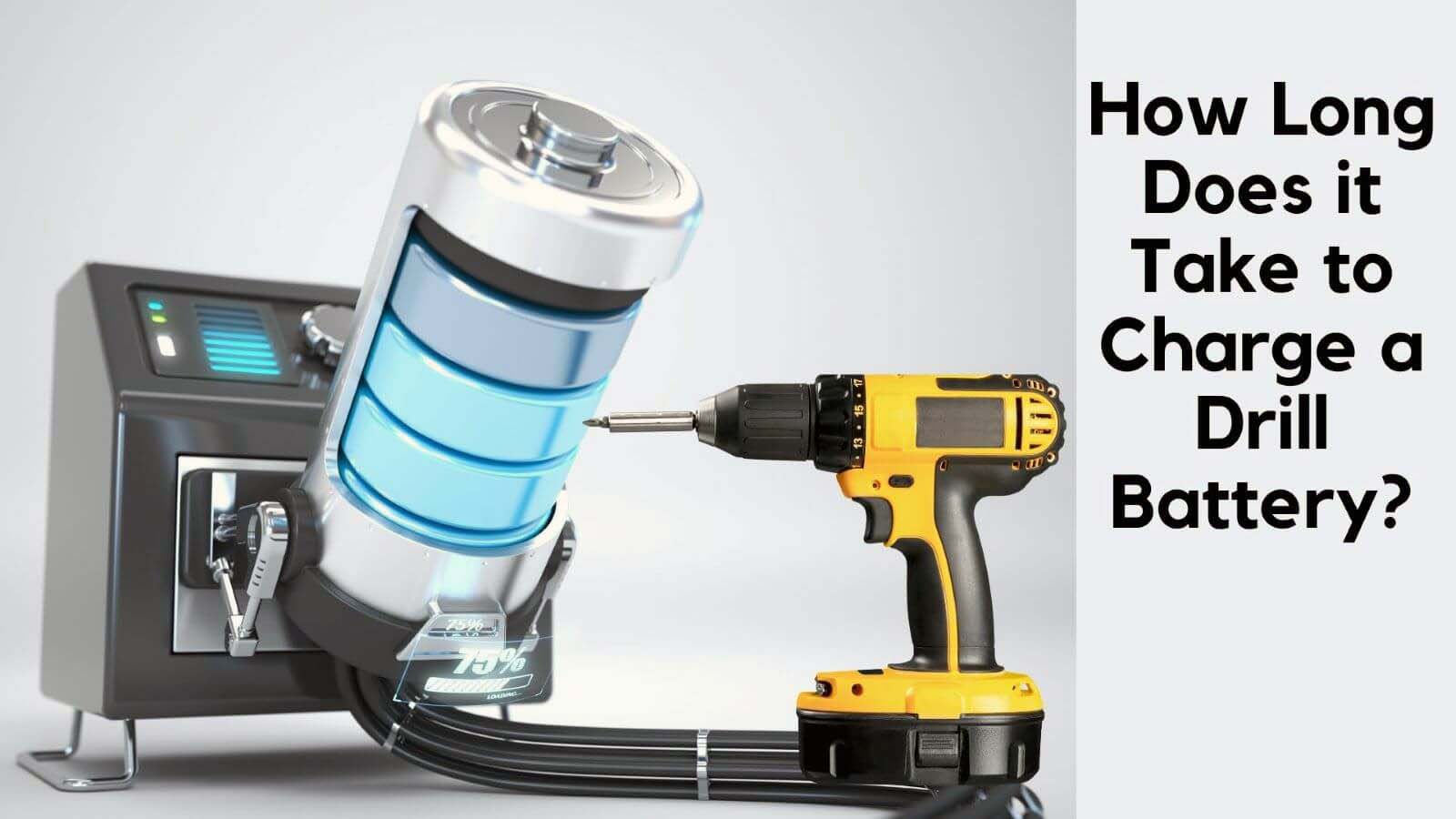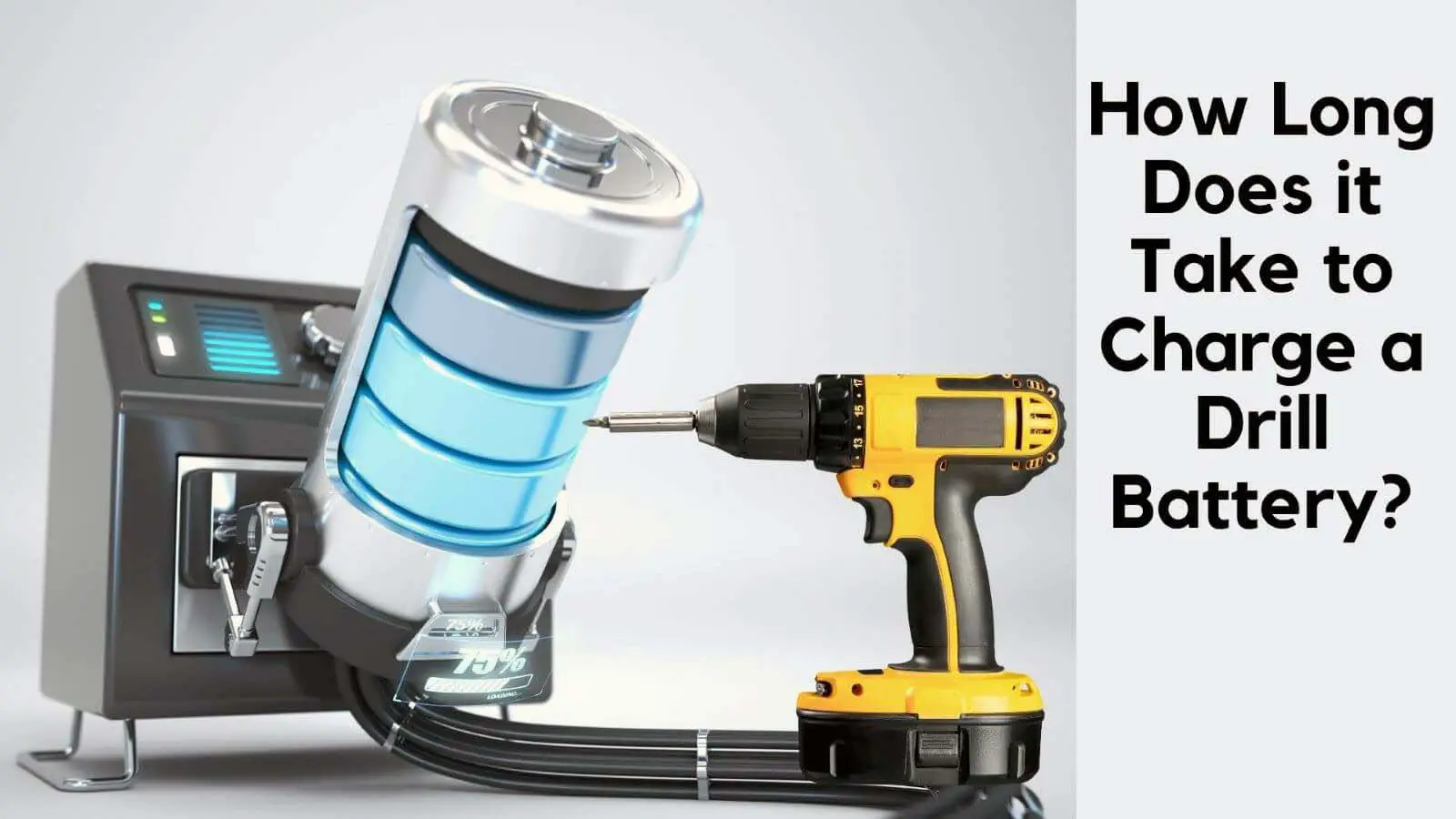If you’ve ever wondered how long it takes to charge power tool batteries, you’re in the right place! Let’s dive into the world of power tools and explore the charging process. Have you ever found yourself eagerly waiting for your power tools to recharge so you can get back to your DIY projects? Well, today, we’ll answer the burning question: “How long do power tool batteries take to charge?”
When it comes to power tools, efficiency is key. Nobody wants to be left twiddling their thumbs waiting for their batteries to charge. So, let’s uncover the charging times for these handy devices. Curious to know more? Let’s get started!
Wondering how long power tool batteries take to charge?
Charging time varies depending on the type and capacity of the battery. On average, it can take anywhere from 30 minutes to several hours to fully charge power tool batteries. Lithium-ion batteries generally charge faster than nickel-cadmium ones. To get the most accurate charging time, refer to the manufacturer’s instructions or check the battery’s indicator lights. Remember to always use the charger specifically designed for your power tool battery.

How Long Do Power Tool Batteries Take to Charge? A Comprehensive Guide
Whether you’re a seasoned DIY enthusiast or a professional contractor, power tools are an essential part of your toolkit. And with the rise of cordless power tools, the issue of battery life and charging time has become increasingly important. In this article, we will explore the factors that affect the charging time of power tool batteries and provide practical tips for optimizing their performance.
Understanding Battery Capacity
Before diving into charging times, it’s crucial to understand battery capacity. Most power tool batteries come in two types: nickel-cadmium (Ni-Cd) and lithium-ion (Li-ion). The capacity of a battery is measured in ampere-hours (Ah), which indicates how much energy a battery can store. Generally, the higher the Ah rating, the longer the battery will last.
While larger Ah ratings mean longer battery life, they can also increase the charging time. The charge rate of a battery is typically measured in C, which represents the battery’s capacity. For example, a 2Ah battery charged at a 1C rate would take approximately one hour to charge fully. However, different manufacturers may recommend different charge rates, so it’s essential to consult the user manual for specific instructions.
It’s important to note that higher-capacity batteries may require a more powerful charger to provide sufficient current. Using an underpowered charger can significantly increase the charging time and potentially damage the battery.
The Influence of Charger Specifications
The charger plays a vital role in determining the charging time of a power tool battery. Chargers come with different specifications, including voltage and charging current. These specifications must match the requirements of the battery to optimize charging times.
The charging current, measured in amperes (A), determines how fast a battery charges. A higher charging current will charge the battery more quickly, but it may also generate excess heat and potentially reduce the overall lifespan of the battery. Therefore, it’s crucial to use a charger that is specifically designed for the battery model and follow the recommended charging current.
Additionally, some modern chargers come with advanced features like fast charging or adaptive charging algorithms that optimize the charging process. These chargers can analyze the battery’s capacity and condition to adjust the charging current and voltage, resulting in faster and more efficient charging.
Factors Affecting Charging Times
While the battery capacity and charger specifications are the primary factors influencing charging times, there are several other considerations to keep in mind:
- Temperature: Extreme temperatures, both high and low, can affect the charging time and the overall performance of the battery. Charging at moderate room temperatures is ideal for optimal performance.
- Battery Age: As batteries age, their capacity may decrease, resulting in longer charging times. Regularly checking and maintaining batteries can help extend their lifespan and maintain optimum charging times.
- Battery Chemistry: Different battery chemistries have different charging characteristics. Ni-Cd batteries, for example, have a higher self-discharge rate and may require more frequent charging than Li-ion batteries.
- Usage Patterns: Intensive or prolonged use of power tools may drain the battery faster and require more frequent charging. It’s important to consider your usage patterns and plan charging accordingly.
Tips for Optimizing Charging Times
While charging times are influenced by various factors, there are several tips you can follow to optimize the process:
- Use the Right Charger: Always use a charger recommended by the tool manufacturer to ensure compatibility and efficient charging.
- Charge in Moderate Temperatures: Avoid charging in extremely hot or cold temperatures, as they can negatively impact the battery’s performance and charging time.
- Monitor Battery Health: Regularly check the battery’s capacity and condition to identify any issues that may affect charging times. Replace worn-out batteries promptly.
- Avoid Deep Discharges: Deeply discharging a battery before charging can increase the charging time. Recharge your batteries before they are completely drained whenever possible.
- Plan Charging Times: Know your usage patterns and plan charging times accordingly to ensure a fully charged battery when needed.
Understanding Battery Maintenance and Care
Proper maintenance and care can significantly impact the charging time and overall performance of power tool batteries. Here are some best practices to follow:
- Store Batteries Properly: When not in use, store batteries in a cool, dry place, away from direct sunlight and extreme temperatures.
- Avoid Overcharging: Overcharging can reduce battery life and increase charging times. Remove the battery from the charger once it is fully charged.
- Clean Battery Contacts: Regularly clean the battery contacts using a soft, dry cloth to ensure optimal connectivity and charging performance.
- Prioritize Battery Rotation: If you have multiple batteries, rotate their usage to prevent overuse and maintain consistent performance.
Factors to Consider When Choosing a Power Tool Battery
When selecting a power tool battery, it’s essential to consider several factors:
Battery Type: Ni-Cd vs. Li-ion
Nickel-cadmium (Ni-Cd) batteries were widely used in the past, but they have been largely replaced by lithium-ion (Li-ion) batteries. Li-ion batteries offer several advantages, including higher energy density, lighter weight, and no memory effect. They also have faster charging times compared to Ni-Cd batteries. However, Li-ion batteries tend to be more expensive.
Battery Voltage
The voltage of the battery must match the requirements of the power tool. Common voltage ratings for power tool batteries include 18V, 20V, and 36V. Higher voltage batteries generally provide more power but may also increase the weight of the tool.
Battery Capacity
The battery capacity, measured in ampere-hours (Ah), determines how long the battery can power the tool. Higher capacity batteries offer longer runtime but may take longer to charge. It’s important to find a balance between runtime and charging time based on your specific needs.
Battery Compatibility
Not all power tool batteries are compatible with every tool. Ensure that the battery you choose is compatible with your specific power tool model. Consult the manufacturer’s recommendations or the tool’s user manual for compatibility information.
Conclusion
Understanding the factors that affect charging times and adopting proper maintenance practices can greatly optimize the performance of power tool batteries. By using the right charger, monitoring battery health, and following recommended charging procedures, you can ensure that your power tools are always ready to perform at their best. Remember to consider battery type, voltage, and capacity when choosing a power tool battery, and prioritize compatibility with your tools. With these tips in mind, you can maximize the efficiency and lifespan of your power tool batteries.
Key Takeaways: How Long Do Power Tool Batteries Take to Charge?
- Power tool batteries usually take a few hours to fully charge.
- The charging time can vary depending on the type and capacity of the battery.
- Lithium-ion batteries tend to charge faster compared to nickel-cadmium batteries.
- Using a fast charger can significantly reduce the charging time.
- It is important to follow the manufacturer’s guidelines for optimal charging time and battery lifespan.
Frequently Asked Questions
Here are some common questions about power tool battery charging times:
1. How long does it typically take to charge a power tool battery?
The charging time for power tool batteries can vary depending on the type of battery and the charger being used. On average, it takes around 1 to 2 hours for a power tool battery to fully charge. However, this can be longer or shorter depending on factors like the battery’s capacity and the charger’s charging speed.
It’s important to follow the manufacturer’s instructions for your specific battery and charger to ensure you achieve the optimal charging time. Some chargers have features like rapid charging or trickle charging that can affect the charging time as well.
2. Are there any factors that can affect the charging time of power tool batteries?
Yes, there are several factors that can affect the charging time of power tool batteries. The battery’s capacity plays a role, with larger capacity batteries typically taking longer to charge. Additionally, the charger’s charging speed can impact how quickly the battery charges.
External temperature can also affect charging time. Batteries may charge slower in colder temperatures, while excessive heat can shorten the lifespan of the battery. It’s important to charge batteries in a suitable environment within the recommended temperature range.
3. Can I use a higher voltage charger to charge my power tool battery faster?
Using a higher voltage charger than what is recommended for your power tool battery can be dangerous and may cause damage to the battery or the charger. It’s always best to use the charger specifically designed for your battery.
Using the correct charger ensures that the battery is charged at the proper voltage and charging speed, which helps maintain the battery’s performance and longevity.
4. Is it necessary to fully discharge a power tool battery before charging?
No, it is not necessary to fully discharge a power tool battery before charging. In fact, it is recommended to avoid completely discharging the battery as it can lead to decreased battery life.
Lithium-ion batteries, which are commonly used in power tools, have a built-in protection circuit that prevents over-discharging. It is generally better to recharge the battery before it is fully depleted to ensure optimal performance and longevity.
5. Can I leave a power tool battery charging overnight?
While leaving a power tool battery charging overnight may not cause immediate harm, it is generally recommended to avoid doing so. Continuous charging beyond the battery’s full capacity can lead to overcharging, which can shorten the battery’s lifespan.
It’s best to monitor the charging process and remove the battery from the charger once it reaches full capacity. This helps ensure the longevity and optimal performance of the battery over time.

Summary:
Power tool batteries take different amounts of time to charge depending on their size and the charger used. Smaller batteries typically take around 1-2 hours, while larger batteries may take 4-6 hours or more. Fast chargers can speed up the charging process. It’s important to consult the manufacturer’s instructions for specific charging times.
Charging a battery for too long can damage it, so it’s crucial to disconnect it once it’s fully charged. It’s also important to use the correct charger for your battery to ensure safe and efficient charging. Taking care of your power tool batteries will help them last longer and perform better during your projects.
